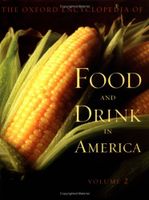Advertisement
Fudge
Published 2004
Fudge, typically chocolate but commonly marketed in dozens of flavors, is a candy made by boiling a sugar mixture until it makes a soft ball when dropped into ice water (or reaches 234°F to 238°F at sea level), then stirring to make a soft candy. Soft candy was known as fondant in classical French confectionery, but fondant is mostly used as a soft center for candies dipped in chocolate or a harder candy mixture. In America, early fudge was strongly associated with the “Seven Sisters” women’s colleges of the 1890s. Students at the colleges spread the popularity of fudge by bringing it to their homes. The name probably developed in 1888 at Vassar College, in Poughkeepsie, New York, and refers to an expression young women might have used instead of swearing. Fudge was something that homesick girls at school could make in their dormitories late at night using a spirit lamp borrowed from the chemistry laboratory, a gaslight, or a chafing dish—a popular gadget at the time. When Fannie Farmer recorded a fudge recipe in 1906, it was not in her practical


